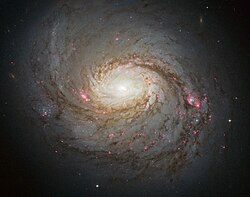Cetus
| Constellation | |
4th) | |
| Main stars | 14 |
|---|---|
| Bayer/Flamsteed stars | 88 |
| Stars with planets | 23 |
| Stars brighter than 3.00m | 2 |
| Stars within 10.00 pc (32.62 ly) | 9 |
| Brightest star | Diphda (β Cet) (2.02m) |
| Messier objects | 1 |
| Meteor showers | October Cetids Eta Cetids Omicron Cetids |
| Bordering constellations | Aries Pisces Aquarius Sculptor Fornax Eridanus Taurus |
| Visible at latitudes between +70° and −90°. Best visible at 21:00 (9 p.m.) during the month of November. Note: †Mira (ο Cet) is magnitude 2.0 at its brightest. | |
Cetus (/ˈsiːtəs/) is a constellation, sometimes called 'the whale' in English. The Cetus was a sea monster in Greek mythology which both Perseus and Heracles needed to slay. Cetus is in the region of the sky that contains other water-related constellations: Aquarius, Pisces and Eridanus.
Features

Ecliptic
Cetus is not among the 12 true
As seen from Mars, the ecliptic (apparent plane of the Sun and also the average plane of the planets which is almost the same) passes into it.
Stars
Deep-sky objects


Cetus lies far from the
The massive
NGC 246 (Caldwell 56), also called the "Cetus Ring",[7] is a planetary nebula with a magnitude of 8.0 at 1600 light-years from Earth. Among some amateur astronomers, NGC 246 has garnered the nickname "Pac-Man Nebula" because of the arrangement of its central stars and the surrounding star field.[8]
The Wolf–Lundmark–Melotte (WLM) is a barred irregular galaxy discovered in 1909 by Max Wolf, located on the outer edges of the Local Group. The discovery of the nature of the galaxy was accredited to Knut Lundmark and Philibert Jacques Melotte in 1926.
UGC 1646, which is a spiral galaxy, also lies between the borders of the constellation. It is about 150 million light-years away from us. It can be seen near TYC 43-234-1 star.[9][10]

History and mythology


Cetus may have originally been associated with a whale, which would have had mythic status amongst Mesopotamian cultures. It is often now called the Whale, though it is most strongly associated with Cetus the sea-monster, who was slain by Perseus as he saved the princess Andromeda from Poseidon's wrath. It is in the middle of "The Sea" recognised by mythologists, a set of water-associated constellations, its other members being Eridanus, Pisces, Piscis Austrinus and Aquarius.[11]
Cetus has been depicted in many ways throughout its history. In the 17th century, Cetus was depicted as a "dragon fish" by Johann Bayer, while both Willem Blaeu and Andreas Cellarius depicted Cetus as a whale-like creature in the same century. However, Cetus has also been variously depicted with animal heads attached to a piscine body.[11]
In global astronomy
In
The
In Hawaii, the constellation was called Na Kuhi, and Mira (Omicron Ceti) may have been called Kane.[12]
Namesakes
See also
- Cetus (Chinese astronomy)
- Book of Jonah
References
- ^ a b "Cetus, constellation boundary". The Constellations. International Astronomical Union. Retrieved 15 February 2014.
- ^ a b c d Ridpath & Tirion 2001, pp. 114–116.
- ^ Levy 2005, p. 67.
- ^ "Hubble observes the hidden depths of Messier 77". ESA/Hubble. Retrieved 4 April 2013.
- ^ "Scientists identify new". Metro. 23 October 2009.
- ISSN 0004-637X.
- ^ Levy, Daniel H. (2011). Deep Sky Objects: The Best And Brightest from Four Decades of Comet Chasing. United States: Prometheus Books. p. 129.
- ^ Levy 2005, p. 129.
- ^ "UGC 1646". simbad.cds.unistra.fr. Retrieved 1 January 2024.
- ^ "JWST Feed - Target Name: 2MASS-11595807+2807159 Title: JWST Routine Wavefront Sensing and Control for Cycle 2 Instrument: NIRCAM/IMAGE Filters: F356W Start Time: 12/21/2023 10:06:59 AM Obs Time: 85.894(s) Proposal ID: 4504". jwstfeed.com. Retrieved 1 January 2024.
- ^ a b c Staal 1988, pp. 33–35
- ^ Makemson 1941, p. 281.
Bibliography
- Levy, David H. (2005). Deep Sky Objects. ISBN 1-59102-361-0.
- Makemson, Maud Worcester (1941). The Morning Star Rises: an account of Polynesian astronomy. Bibcode:1941msra.book.....M.
- Ridpath, Ian; Tirion, Wil (2001), Stars and Planets Guide, Princeton University Press, ISBN 0-691-08913-2
- Ian Ridpath and Wil Tirion (2007). Stars and Planets Guide, Collins, London. ISBN 978-0-691-13556-4
- Staal, Julius D.W. (1988). The New Patterns in the Sky. The McDonald and Woodward Publishing Company. ISBN 0-939923-04-1.
